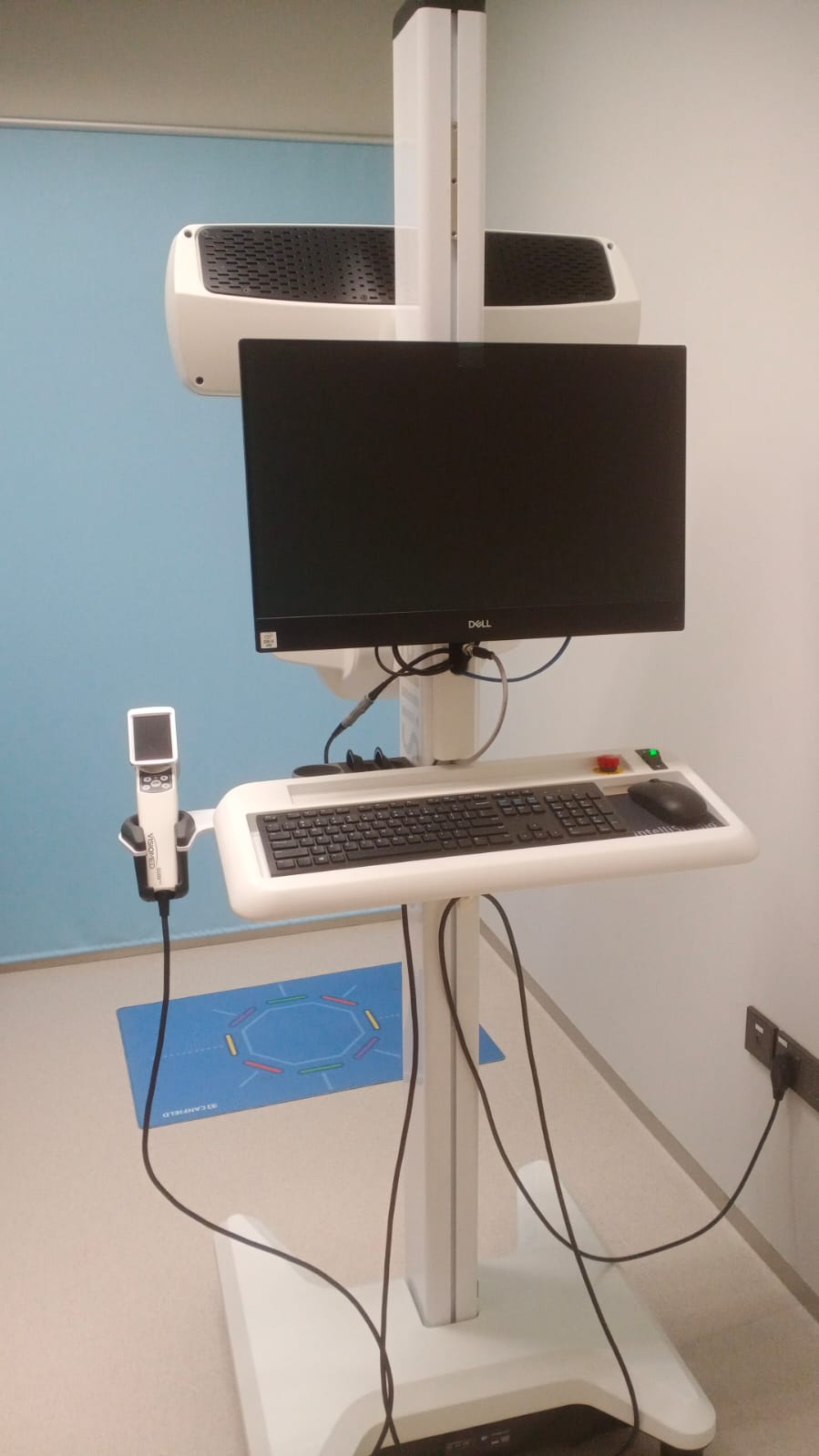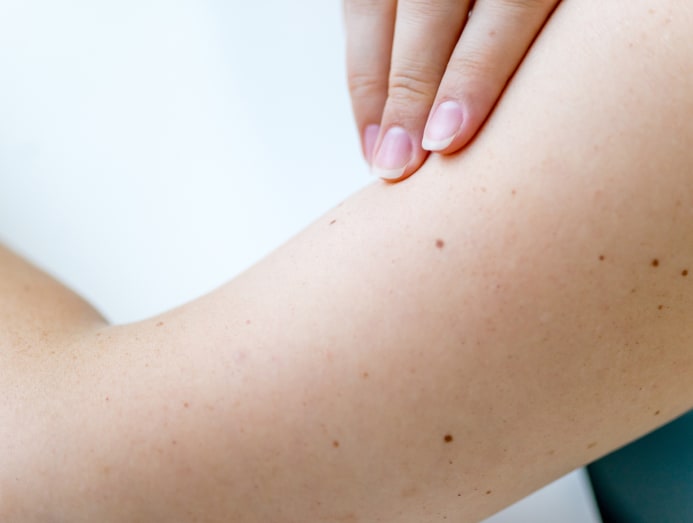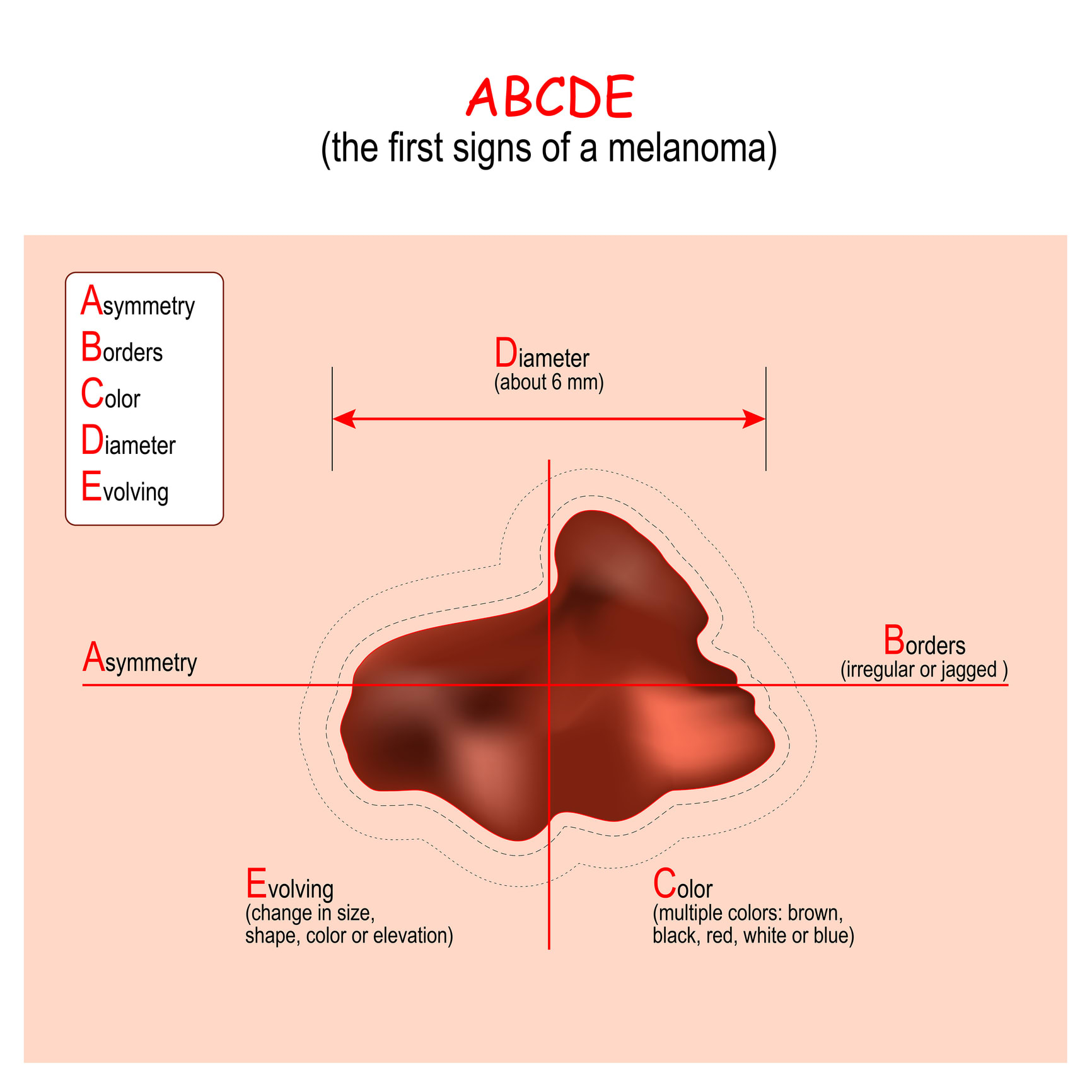Getting a 'mole checkup' may help prevent skin cancer (yes, it’s now a thing)
Monitoring the health of your body’s moles could be key – and one clinic does a regular scan called “mole mapping”. Time to include this in your annual physical?

Taking care of your skin isn’t just about using the right skincare, it’s also about keeping track of your moles and their changes. (Photo: iStock/mtmphoto)
Do you usually think nothing about sun exposure, beyond whether you’ll develop dark spots on your skin because you’ve been lazy about applying sunscreen?
Exposing the skin to UVA and UVB rays leads to premature ageing and wrinkles. The resulting tan you see is the skin’s way of protecting itself. Sometimes, those tans turn into hyperpigmentation or dark spots.
While these are fairly easy to treat with a course of laser treatments at the dermatologist or aesthetics physician’s clinic, you should be aware that constant UV exposure accumulates – and causes cell damage.
While the body can repair some of those cells, over time the damage builds up beyond repair.
One of the consequences of sun exposure is skin cancer. In Singapore, our exposure to the sun is higher than most because of our climate and our location near the equator.
AN ANNUAL MOLE CHECKUP
One clinic hopes to make looking after your skin health a lot easier with a regular scan called mole mapping. The Dermatology & Surgery Clinic has a specialised machine which spots and maps your body’s moles and monitors them over time.

A 45-minute scan begins with a consultation with a dermatologist about your health history, regular habits and with the doctor examining your body for obvious spots.
After the consultation, the scan with the machine begins and the machine photographs parts of your body. Thereafter, the dermatologist reviews your scan and marks out specific areas of concern. Closeup scans are taken for a better look.
A mole mapping scan and consultation at Dermatology & Surgery Clinic costs from S$250 and the session lasts about an hour.
The scan device uses non-invasive 3D digital imaging to capture pictures of the skin’s surface in macro quality resolution. This form of dermoscopy detects skin lesions, spots or unusual moles.
It allows the dermatologist to differentiate the cancerous (malignant) or non-cancerous (benign) spots. The scans also serve as your annual skin medical report, to monitor the skin's overall health.

Dr Sue-Ann Ho, a dermatologist and surgeon at the clinic, said: “Skin cancer is on the rise in Singapore, with data showing an increase in incidence rates from 1968 to 2016.”
While not as high as breast cancer in women and colon cancer in men, skin cancer still ranks within the top 10 cancers in Singapore.
Dr Ho added: “The Singapore Cancer Registry in 2018 showed that skin cancer was ranked within the top 10 for cancer cases amongst men (sixth) and women (seventh).”
This is a cause for concern. With our year-round exposure to the sun’s UV rays, it does put skin cancer in the spotlight.
Excess UV exposure leads to two common types of skin cancers – basal cell carcinoma (BCC) and squamous cell carcinoma (SCC). These are non-melanoma cancers.
These are the most common cancers but they are by no means the only ones. Merkel cell cancer is a rare and aggressive form of cancer that starts in the hormone-producing cells under the skin and hair follicles. It usually forms in the head and neck.
Melanoma is the most serious form of skin cancer. It happens when healthy melanocytes (pigment-producing cells) change and grow out of control, forming a cancerous tumour. Sometimes, melanoma develops from a mole which may present via changes in shape, size, colour and evolve over time.
As cancers like SCC and melanoma can metastasise and spread to other organs in the body, keeping an eye on irregular moles and spots is important.
Dermatologist Dr Teo Wan Lin of TWL Specialist Skin & Laser Centre said: “Skin cancer can happen in anyone who has excess UV radiation. Both genders are equally at risk of developing skin cancers like melanoma but things like our environment and genetic factors play a big role as well.”
BENEFITS OF ANNUAL MOLE MAPPING
Like your annual health check, the Pap smear and mammogram, mole mapping allows you to collect accurate information to address any arising issues.
Dr Ho added: “Coupled with a physical examination with the dermatologist, it can pick up abnormal spots and lesions which were previously ignored or thought to be normal."
Anyone can do it but in general, Dr Ho advised people who are at higher risk for melanoma to start mole mapping at least once a year.

People with fair skin, who burn easily and have a family history of melanoma, should consider having a scan. Also, if you have over 50 moles on the body with some unusually shaped ones or moles that have enlarged, it’s time to consider having a thorough scan for the sake of your skin health.
SIGNS OF SKIN CANCER
Some of the usual signs include new and unusual spots, especially if it is changing in shape, size, and colour. Doctors use a very simple acronym as a guide for monitoring for skin cancers – ABCDE.
A for Asymmetry, whether one half of the spot or mole matches the other half.
B for Border and refers to the edges of the mole, whether they are regular or jagged and blurred.
C for Colour, considering whether they are even all over, or in different shades of brown, black or with splotches of other colours like pink or red.
D for Diameter. This is to track for its size and notably, if it is 6mm or more across.
E for Evolving which monitors whether the mole or spot has changed in recent weeks and months.

You can detect changes to moles and spots using the above guide. Sometimes, it presents as one or includes two or more of the above factors. That would be a sure sign for you to visit the dermatologist.
In Singapore, skin cancer awareness is on the rise, but the incidence is far lower than other forms of cancer.
Ethnicity and age are contributing factors. Said Dr Joyce Lim, dermatologist at Joyce Lim Skin & Laser Clinic: “I see one to two Caucasians who have incidences of skin cancer monthly but for Asians, I get the same number but every six months. And this is usually found in older patients.”
WAYS TO PROTECT AGAINST UV RADIATION
Even if you don’t present any of the symptoms, it is always important to ensure you use enough sun protection against the harsh UV rays we get day-in, day-out.

Here’s a quick guide:
- At least SPF30. Most dermatologists recommend this as the minimum as it protects up to 97 per cent of UV rays. In comparison, SPF 50 provides up to 98 per cent protection.
- Don’t stint on sunscreen. “Most of the time, we are applying 85 per cent less than what most sunblocks or sunscreens recommend. And not forgetting, you can still be exposed to UV when you’re seated indoors, by a window without UV filters,” said Dr Teo.
- Block it out physically. With Singapore’s year-round exposure to the sun, Dr Lim recommends using umbrellas, and wearing hats and clothing with UV protection.
- Add on blue light protection. With more exposure to blue light radiation from smart devices, causing the eyesight and skin to age, Dr Lim advises using sunblock with iron oxide. It is often added to zinc oxide – a popular sunblock ingredient. “Iron oxide is one of the most effective blue light filters, which will block the blue light radiation emitted from smart devices.”
- Stay indoors from 12pm to 3pm. That’s when UV rays are at their strongest. Dr Teo goes one step further and recommends staying out of direct sun rays from as early as 9am to 5pm.
Whatever you choose as part of your sun protection, Dr Ho says: “It’s important to be sun-sensible and protect our skin from UV exposure where possible.”
An annual mole mapping scan with a solid skincare regime with adequate UV protection may be the answer.
SUN PROTECTION DECODED
UVA: Think A for ageing. These light rays cause wrinkles and loss of skin elasticity. Ninety-five per cent of the UV rays we’re exposed to are UVA.
UVB: Think B for burns (and tans). UVB makes up the remaining 5 per cent of light rays that reach the Earth and are what allow the skin to produce Vitamin D. But its shorter wavelength means it can cause sunburn and skin darkening.
Physical sunblock vs chemical sunscreen: A physical sunblock sits on the skin and deflects UV rays. Its key ingredients include mineral-based zinc oxide and titanium dioxide.
Chemical sunscreens, such as those that contain oxybenzone, absorb UV rays, then scatter them as heat energy. But because they contain chemical compounds, may cause irritation to the skin. Oxybenzone is also toxic to coral reefs.
Whichever you choose, find one with broad-spectrum protection. This provides cover from both UVA and UVB rays.
SPF and PA+: Sun Protection Factor or SPF protects the skin from UVB rays. SPF ratings provide the maximum length of time one receives protection. This means if you normally burn after 10 minutes in the sun, an SPF30 sunscreen would theoretically provide 30 times more protection than if you did not apply any sun protection – 300 minutes.
However, sun protection is also dependent on the amount of exposure and what time of the day it is.
CNA Women is a section on CNA Lifestyle that seeks to inform, empower and inspire the modern woman. If you have women-related news, issues and ideas to share with us, email CNAWomen [at] mediacorp.com.sg.








